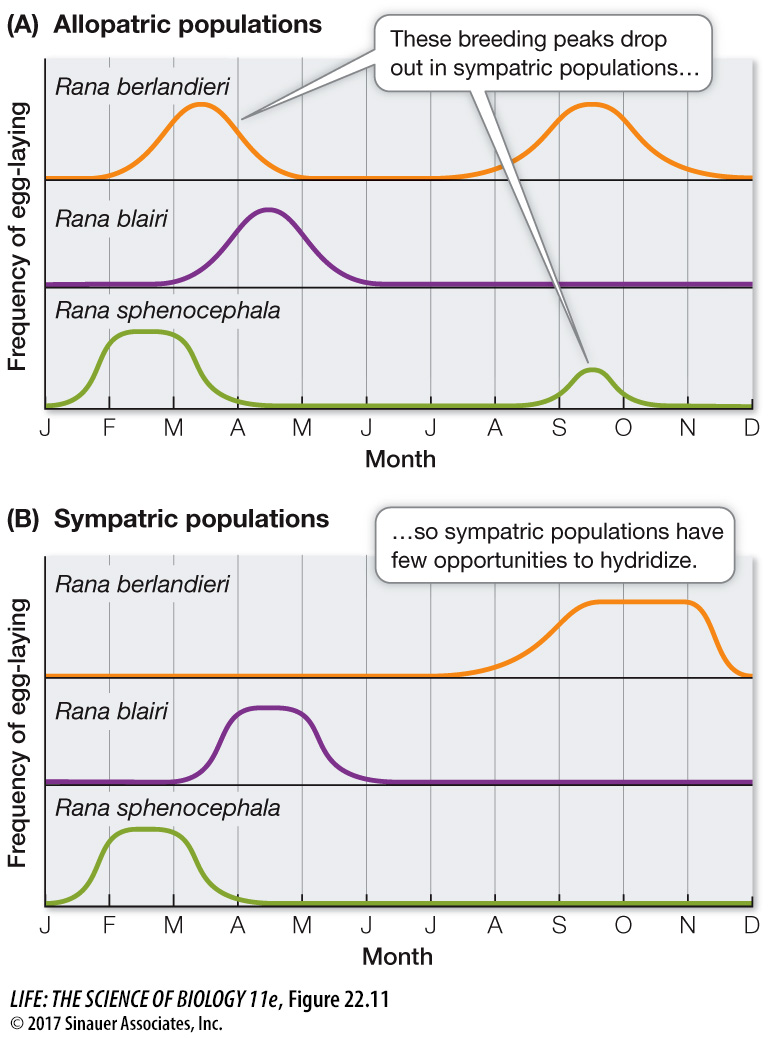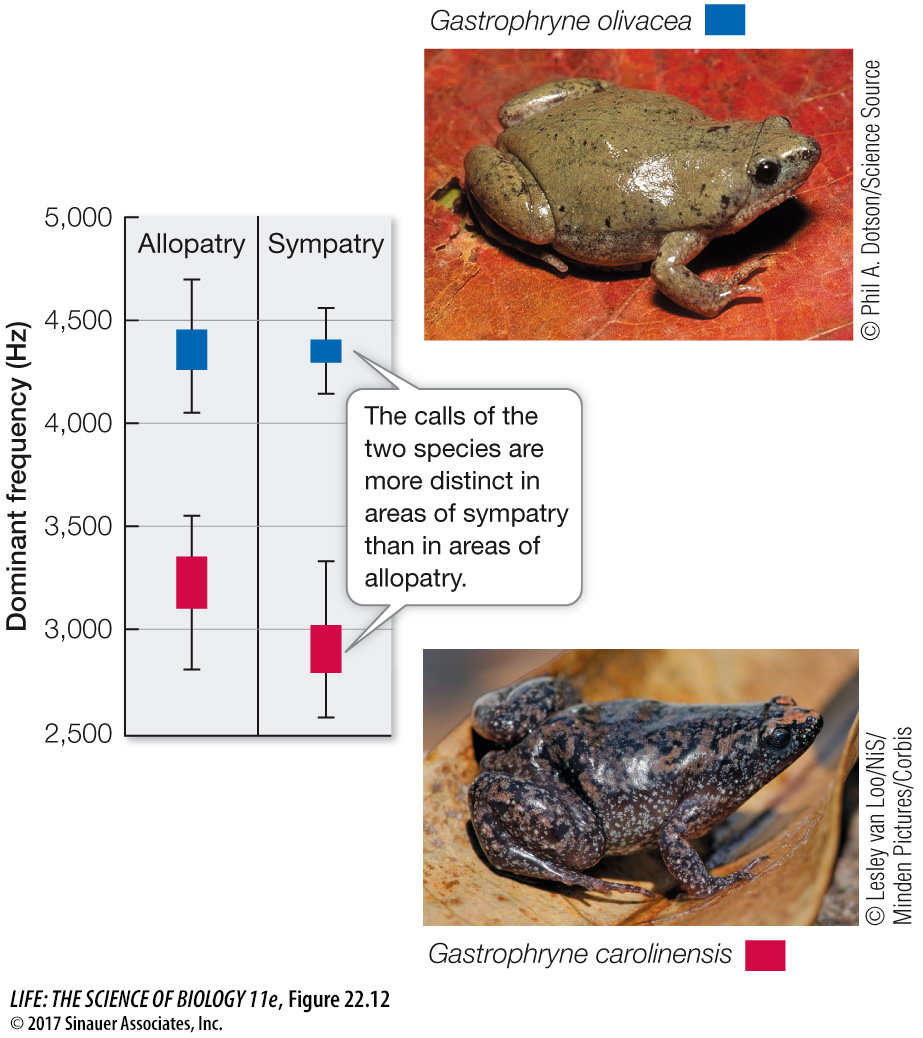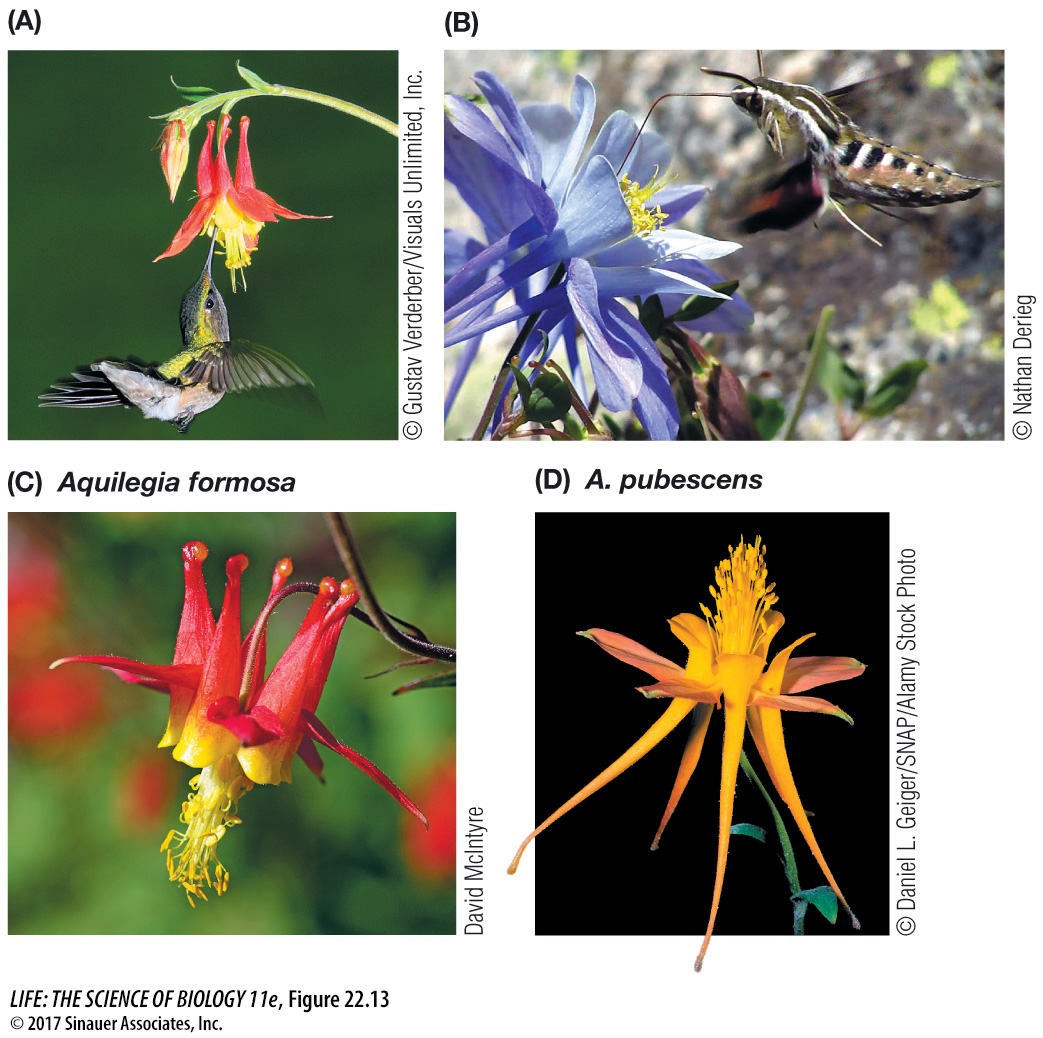Prezygotic isolating mechanisms prevent hybridization
Prezygotic isolating mechanisms, which come into play before fertilization, can prevent hybridization in several ways.
MECHANICAL ISOLATION Differences in the sizes and shapes of reproductive organs may prevent the union of gametes from different species. With animals, there may be a match between the shapes of the reproductive organs of males and females of the same species, so that reproduction between individuals with mismatched reproductive structures is not physically possible. In plants, mechanical isolation may involve a pollinator. For example, some orchid species produce flowers that look and smell like the females of particular species of bee or wasp (Figure 22.10). When a male wasp visits and attempts to mate with the flower (thinking it is a female wasp of his species), his mating behavior results in the transfer of pollen to and from his body by appropriately configured anthers and stigmas on the flower. Insects that visit the flower but do not attempt to mate with it do not trigger the transfer of pollen between the insect and the flower.

TEMPORAL ISOLATION Many organisms have distinct mating seasons. If two closely related species breed at different times of the year (or different times of day), they may never have an opportunity to hybridize. For example, in sympatric populations of three closely related leopard frog species, each species breeds at a different time of year (Figure 22.11). Although there is some overlap in the breeding seasons, the opportunities for hybridization are minimized.

Q: What means of selection helps reinforce this prezygotic isolating mechanism in areas of sympatry?
Overlap in breeding seasons in areas of sympatry results in increased hybridization. The hybrids have reduced fitness, so there is selection in favor of frogs that breed at times when hybridization is less likely.
BEHAVIORAL ISOLATION Individuals may reject, or fail to recognize, individuals of other species as potential mating partners. For example, the mating calls of male frogs of related species diverge quickly (Figure 22.12). Female frogs respond to mating calls from males of their own species but ignore the calls of other species, even closely related ones. The evolution of female preferences for certain male coloration patterns among the cichlids of Lake Malawi, described at the opening story of this chapter, is another example of behavioral isolation.

Media Clip 22.1 Narrowmouth Toads Calling for Mates
Sometimes the mate choice of one species is mediated by the behavior of individuals of other species. For example, whether or not two plant species hybridize may depend on the food preferences of their *pollinators. The floral traits of plants, including their color and shape, can enhance reproductive isolation either by influencing which pollinators are attracted to the flowers or by altering where pollen is deposited on the bodies of pollinators. A plant whose flowers are pendant will be pollinated by an animal with different physical characteristics than will a plant in which the flowers grow upright (Figure 22.13A and B). Because each pollinator prefers (and is adapted to) a different type of flower, pollinators will rarely transfer pollen from one plant species to the other. Such isolation by pollinator behavior is seen in the mountains of California in two sympatric species of columbines (Aquilegia) that have diverged in flower color, structure, and orientation. A. formosa (Figure 22.13C) has pendant flowers with short spurs (spikelike, nectar-

*connect the concepts Some plants and their pollinators become so tightly adapted to each other that they develop mutually dependent relationships, as described in Key Concept 29.3.
HABITAT ISOLATION When two closely related species evolve preferences for living or mating in different habitats, they may never come into contact during their respective mating periods. The Rhagoletis flies discussed in Key Concept 22.3 experienced such habitat isolation, as did the cichlid fish that first adapted to rocky or sandy habitats upon entering Lake Malawi, as described at the opening of this chapter.
GAMETIC ISOLATION The sperm of one species may not attach to the eggs of another species because the eggs do not release the appropriate attractive chemicals, or the sperm may be unable to penetrate the egg because the two gametes are chemically incompatible. Thus even though the gametes of two species may come into contact, the gametes never fuse into a zygote.
Gametic isolation is extremely important for many aquatic species that spawn (release their gametes directly into the environment). For example, gametic isolation has been extensively studied in spawning sea urchins. A protein known as bindin is found in sea urchin sperm and functions in attaching (“binding”) the sperm to eggs. All sea urchin species studied produce this egg-